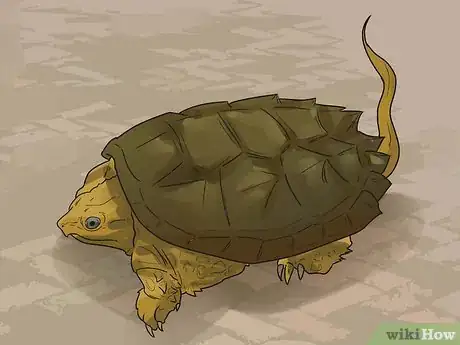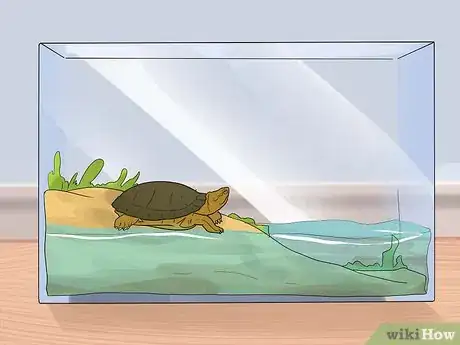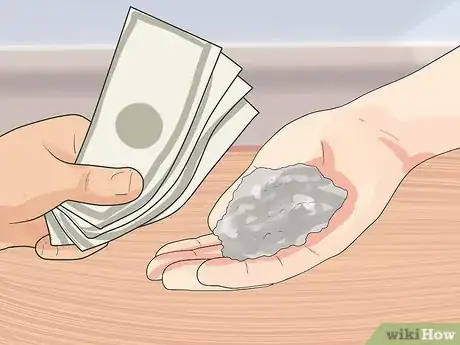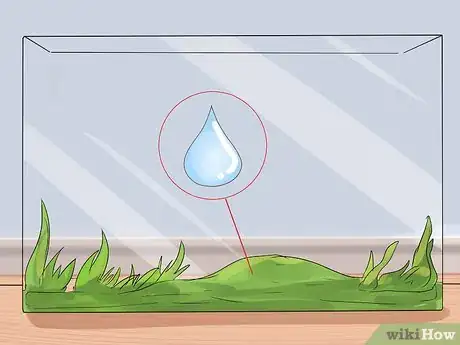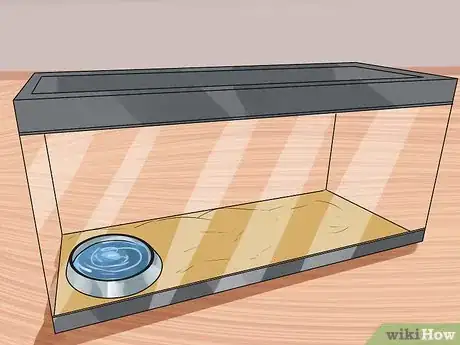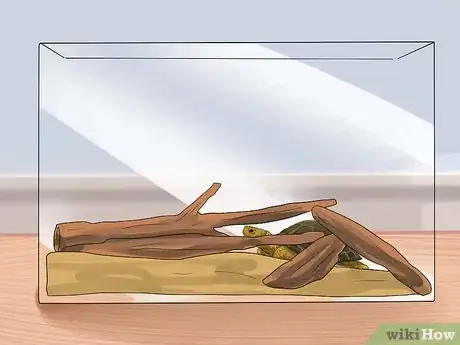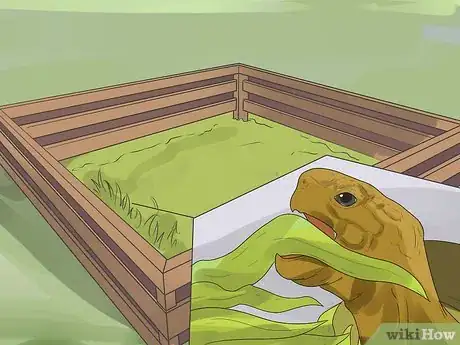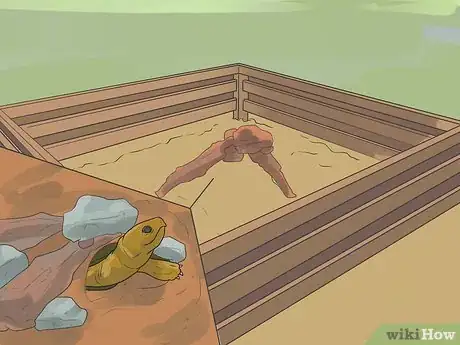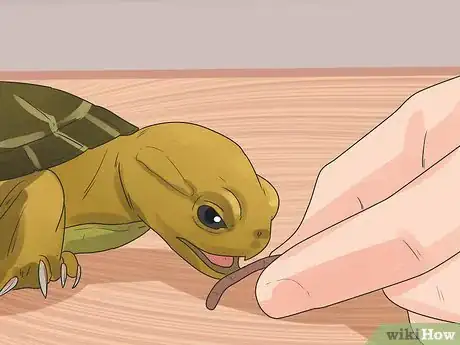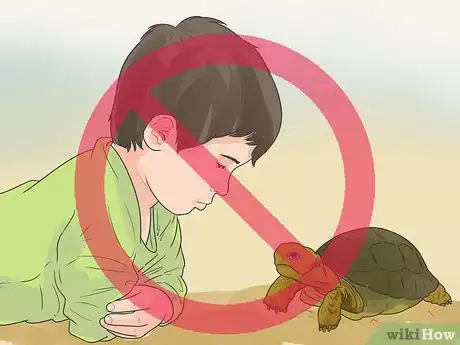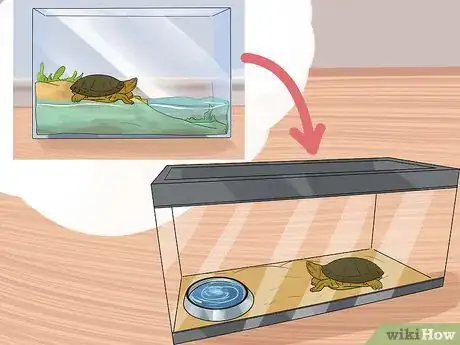This article was co-authored by Audra Barrios. Audra Barrios is a Marine Biologist and owner of Lick Your Eyeballs, a business offering experiemces, reptiles, supplies and plants. With over 15 years of experience, Audra specializes in reptiles and exotic animals, environmental education, marine biology, conservation issues, and animal husbandry. Audra earned a BASc in Marine Biology from the University of California, Santa Cruz, and studied Natural Sciences at the College of Marin. She is the founder and Executive Director of Things That Creep, a non-profit dedicated to herptile conservation through education. She has spent the last nine years working as a biologist at the California Academy of Sciences.
There are 16 references cited in this article, which can be found at the bottom of the page.
wikiHow marks an article as reader-approved once it receives enough positive feedback. In this case, 88% of readers who voted found the article helpful, earning it our reader-approved status.
This article has been viewed 215,419 times.
Land turtles can be fun and rewarding pets. They include box turtles and all kinds of tortoises. Before you choose your land turtle, keep in mind that they typically need both indoor and outdoor environments in order to be healthy. Also realize that turtles can live over 30 years and tortoises can live over 50 years (some even over 100). With a land turtle, you’re getting a pet for life. [1]
Steps
Choosing your Pet
-
1Investigate your choices. Are you ready to be the owner of a land turtle? They live a long time, can grow quite large, are not great pets for young children, and their care and feeding can be quite expensive (special lights, enclosures, vet visits). Because of their longevity (80-100 years), you also need to realize that your tortoise, if well cared for, can easily outlive you. [2] [3]
-
2Decide if you want a turtle or tortoise. Turtles are omnivores and require some time in the water.[4] Tortoises are herbivores and are land-based. Both require appropriate outdoor and indoor environments and need good and attentive care if they are to thrive. Land turtles may have the reputation as an “easy” pet, but they actually require quite a bit of work. [5]Advertisement
-
3Visit turtle breeders and talk to other turtle owners online. Observe the pets, and look at photos of some possibilities. Which ones do you like? Which ones do long-time turtle keepers recommend? If it’s your first turtle, you also should ask which ones are easiest to care for and best for first-time owners.
-
4Keep in mind the climate where you live. Land turtles, when cared for properly, need to be outside at least part of the time. Choose a turtle that can thrive where you live. This means if you live in a humid place, choose a turtle that likes those conditions. Get a turtle that thrives in arid places if you live in the desert. This will make it much easier to care for your turtle because you won’t have to create a new outdoor environment for the turtle and keep it regulated.
-
5
-
6Look for native land turtles. Just as choosing a turtle that thrives in your outdoor environment makes caring for it much easier, so too does choosing a turtle native to your country and region. Not all areas have native land turtles, but ask around for the turtles most likely to thrive in your area.
-
7Buy a turtle from a breeder or rescue organization. Turtles from elsewhere are often taken from the wild, leading to the depletion of native turtle and tortoise populations around the world. For the health of the environment and native turtles, domestically-bred turtles or rescued turtles are the best choice.
Creating the Turtle's Indoor Environment
-
1Create the indoor enclosure for your turtle. It needs to be watertight. There are many possible ways to make an enclosure, but it needs to be quite large, even for small turtles -- many sources say that you can start in a large and deep plastic tub, but will need to make much larger enclosures as your turtle grows. You can make a dedicated turtle table out of wood, repurpose an old bookshelf with the shelves removed, or use a plastic kiddie pool. Your ultimate choice will depend on the species of land turtle. [8]
-
2Add elements to the indoor structure. Turtles have specific needs, and the exact specifications will vary depending on the turtle you choose. Make sure you have everything in place before you get your turtle. You can’t just get the different parts together as you go -- the turtles will need everything immediately.
-
3Purchase the appropriate dirt product for the kind of turtle you have. Turtles will need substrate, which allows them to dig, and can also help in waste disposal. It’s vital that you choose a good-quality and appropriate substrate, because they will have so much contact with it. [9]
-
4
-
5Add humidity based on your type of land turtle. Different turtles need different levels of humidity, so check the needs of your species. It could be low, middle, or high, depending on the native environment of your turtle. Most will need some kind of misting on their substrate. [12]
-
6Keep your land turtle at the appropriate temperature for their species. You might have to buy a heat lamp for the proper environment for your turtle or tortoise. Particularly if you have a turtle that is not native to your area, heat might prove to be the most essential element for your land turtle. [13]
-
7
-
8Create a place for your turtle to hide. This is an essential part of the way turtles interact with their environment. It could be as simple as a small plastic box or bowl with a hole cut in the side. [16]
Making an Outdoor Environment
-
1Create the outdoor enclosure for your turtle. This will be just as important for many land turtle species as the indoor enclosure. Make sure yours is large and safe. Turtles need to be protected from predators and from escape. Your enclosure should be tall enough they cannot escape over it, and have barriers under the dirt so they can’t burrow under. A roof for the enclosure is also typically a necessity. [17]
-
2Make sure you use substrate as the base of the enclosure. Do not just use the dirt you have in your backyard -- it’s not appropriate for land turtles. Be advised that grass, particularly wet grass, is also bad for land turtles. It can cause painful abrasions. [18]
-
3Include plants that the land turtles like to eat. Since your turtle will be spending a lot of time outdoors, planting food for them makes a lot of sense. You won’t have to look for food for them, and they can choose to eat when they want to. [19]
-
4Create places for them to hide and explore -- rocks, wood, etc. Don’t just have a flat and boring outdoor enclosure. Create little hills they can climb, different areas to explore, and a variety of environments within the enclosure. [20]
Caring for your Pet
-
1Feed your tortoise or box turtle an appropriate diet. Too much of some nutrients like calcium or protein can severely stunt or even kill your land turtle. Keep in mind that tortoises are herbivores, while box turtles are omnivores. You should give box turtles slugs, snails, crickets and other animal matter twice a week. The rest of the time they will eat fruits like melon, berries, and tomatoes. Greens are also a great addition to a turtle’s diet. Tortoises do not eat any animal matter, but their diets are quite varied. Please do the research to determine what diet is best for your particular species of tortoise. [21]
-
2Consider whether you want your land turtle to hibernate. Hibernation is a contested issue among turtle owners. Talk to your veterinarian to see if your land turtle should be hibernating. Keep in mind that turtles who do not have enough fat reserves can easily die if they are in hibernation. Hibernation is also not recommended for turtles who might be at all medically compromised. Some turtle experts caution against hibernation at all. [22]
- If you do choose to hibernate your land turtle, prepare your turtle habitat carefully. You might even need to build a special hibernation box, depending on the species. It needs to be in a place that is temperature-regulated and will not flood. Stop feeding your land turtle two weeks before planned hibernation, and start lowering the temperature in the habitat slightly. Hibernation can last from 3-5 months. Be sure to check the temperature requirements for your particular type of land turtle. [23]
-
3Create a healthy environment for your turtle and your family. Land turtles should not be in homes that have dogs (possible predators of turtles). Keep in mind that infants and children are also not ideal companions for turtles. Many experts recommend that only children over 12 years old have contact with land turtles. Most small turtles are carriers of salmonella, an infection that can possibly be fatal to infants, the elderly, and the medically fragile. Even if your turtle is not in the “small turtle” category, there is still a risk of the turtle passing on infections to children. [24]
-
4Make regular trips to veterinarian with your land turtle. The majority of turtles carry parasites and possibly other infections, some of which can be dangerous to humans. Depending on where you got your turtle from, it might be at risk for malnourishment and dehydration. With turtles, it can be difficult for you to tell if they are having problems, so choose a good exotic animal veterinarian. [25]
-
5Do not change your pet’s environment as he or she grows. Most land turtles will grow a lot as they grow older. This doesn't means you need to be attuned to the ways you will need to change their living environments, both inside and outside, and their feeding and possible hibernation. Turtles need 3 square feet of floor space for each 8 inches of turtle length. For tortoises, it’s even more -- a minimum of 3 square yards of floor space for each 12 inches of length. [26]
References
- ↑ http://animals.mom.me/land-turtles-3456.html
- ↑ Audra Barrios. Marine Biologist & Reptile Specialist. Expert Interview. 18 August 2020.
- ↑ http://www.tortoiseforum.org/threads/tortoise-basics-for-prospective-or-beginner-tortoise-owners.22635/
- ↑ Audra Barrios. Marine Biologist & Reptile Specialist. Expert Interview. 18 August 2020.
- ↑ http://pets.petsmart.com/guides/turtles/choosing-the-right-turtle.shtml
- ↑ Audra Barrios. Marine Biologist & Reptile Specialist. Expert Interview. 18 August 2020.
- ↑ http://www.austinsturtlepage.com/Articles/firstlandturtle.htm
- ↑ http://www.tortoiseforum.org/threads/tortoise-basics-for-prospective-or-beginner-tortoise-owners.22635/
- ↑ http://tortoisetrust.org/articles/substrates.html
- ↑ Audra Barrios. Marine Biologist & Reptile Specialist. Expert Interview. 18 August 2020.
- ↑ http://www.drsfostersmith.com/pic/article.cfm?aid=827
- ↑ http://www.peteducation.com/article.cfm?c=17+1797&aid=944
- ↑ http://www.tortoisetrust.org/articles/avoidbox.html
- ↑ Audra Barrios. Marine Biologist & Reptile Specialist. Expert Interview. 18 August 2020.
- ↑ http://pets.petsmart.com/guides/turtles/choosing-the-right-turtle.shtml
- ↑ http://www.tortoiseforum.org/threads/tortoise-basics-for-prospective-or-beginner-tortoise-owners.22635/
- ↑ http://www.reptilesmagazine.com/Reptile-Magazines/Reptiles-Magazine/April-2008/Outdoor-Tortoise-Enclosure/
- ↑ http://www.tortoisetrust.org/articles/habitatdesign.htm
- ↑ http://turtle_tails.tripod.com/backyardturtles/byttour1.htm
- ↑ http://www.tortoisetrust.org/articles/habitatdesign.htm
- ↑ http://www.tortoisetrust.org/articles/webdiet.htm
- ↑ http://www.peteducation.com/article.cfm?c=17+1797&aid=944
- ↑ http://www.tortoisetrust.org/articles/habitatdesign.htm
- ↑ http://www.fda.gov/ForConsumers/ConsumerUpdates/ucm048151.htm
- ↑ http://www.austinsturtlepage.com/Articles/firstlandturtle.htm
- ↑ http://www.dummies.com/how-to/content/making-an-indoor-home-for-a-terrestrial-turtle-or-.html
About This Article
Land turtles are rewarding pets with long lifespans—many of them live to be over 30 years old! To keep your land turtle healthy and happy, provide both an indoor and outdoor enclosure for it to dwell in. Enclosure size depends on your turtle’s size and species but in general, box turtles need 3 square feet of enclosure space for every 8 inches (20 cm) of turtle length. Land tortoises need a minimum of 3 square yards of floor space for every 12 inches (30 cm) of length. Each enclosure needs a layer of dirt substrate, a bowl of fresh water, and places where the turtle can hide and explore. Provide lighting and maintain a temperature and humidity level that’s appropriate for the species you have. If you aren’t sure, Google your turtle’s native environment so you can mimic it. Keep the light, temperature, and humidity consistent at all times inside the enclosures. Tortoises are herbivores, so feed yours fresh fruits, vegetables, flowers, and leafy greens 2-3 times a week. Box turtles are omnivores, so in addition to fresh fruits and veggies, feed your turtle worms, crickets, and other insects 2-3 times a week. Give your turtle fresh water daily and clean both enclosures every 2-3 weeks so your turtle’s environment is sanitary and comfortable. If you notice unusual symptoms like sneezing, diarrhea, shell fractures, or abscesses, bring your turtle to an exotic animal veterinarian for evaluation and treatment. For tips on creating a healthy environment for your turtle, read on!






